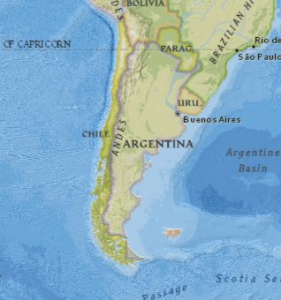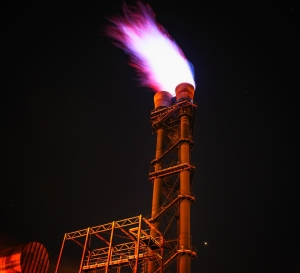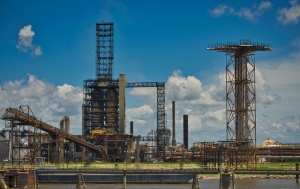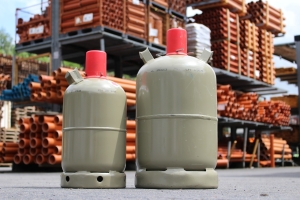Argentina – An Increasing Energy Market
We continue our series analyzing other countries in the Western Hemisphere by taking a look at the South American country of Argentina. This post examines the country’s resources and energy usage, exploring their connection to the global LPG markets.
Location and Natural Resources
Covering most of the southern portion of South America, Argentina is the eighth largest country in the world. It has been the largest dry gas producer and the fourth-largest producer of petroleum and other liquids in South America, according to the BP Statistical Review of World Energy.
Energy Usage Breakdown
The natural gas Argentina produces, is widely used in the electrical, industrial, and residential sectors. These sectors represent 52% of the country’s total primary energy consumption.
The primary fuel used in the transportation sector is oil, which represents 36% of Argentina’s total energy consumption.
Hydropower is the third-largest primary energy source for Argentina. Smaller shares of the country’s total energy consumption can be attributed to nuclear power and coal, which are used to generate electricity. Other renewable resources are used to produce biofuels for transportation.
Increasing Production Capability
Restrictive Energy Policies Limit Development
Historically, Argentina’s energy sector policies created an imbalance of supply and demand by limiting the industry’s attractiveness to private investors, restraining the profits of domestic producers, and shielding consumers from rising prices. Over the past decade, domestic demand for energy has grown rapidly while production of petroleum, other liquids, and natural gas has declined. This situation led to Argentina becoming a net hydrocarbons importer. However, after the discovery and development of the Vaca Muerta formation, Argentina has been able to significantly increase their oil and gas production.
Historic Oil and Gas Production
In 2024, Argentina increased their oil and gas production to historic levels, driven mainly by the Vaca Muerta formation. During the first eight months of the year, natural gas production amounted to 34.511 billion cubic meters, representing an increase of 25% compared to the same period in 2014. Oil production, meanwhile, reached 26.337 billion cubic meters, reflecting a year-on-year increase of 9.3%.
Argentina has significant oil and gas reserves, specifically in the Vaca Muerta formation. According to the most recent data, proven oil reserves amount to approximately 2.7 billion barrels, while natural gas reserves are estimated at around 308 billion cubic meters.
LPG Production and Demand
Natural gas is the raw material required for liquified petroleum gas (LPG) production. With production of natural gas reaching historic levels in 2024, the situation implies that LPG production in Argentina has also shown significant growth.
Driven by the development of the Vaca Muerta formation and increased investment in this energy sector, LPG production in Argentina has reached approximately 2.5 million metric tons per year (31.75 MMbbls/y).
The country’s demand for LPG is substantial and has shown steady growth. According to the most recent data, domestic LPG consumption reaches approximately 1,200 metric tons per day (5.56 MMbbls/y) This includes both cylindered LPG, used primarily in homes, and bulk propane, used in industrial and commercial applications.
The LPG market in Argentina is characterized by high residential demand, especially in areas where access to natural gas is limited. In addition, LPG is a popular choice for heating and cooking due to its efficiency and lower environmental impact compared to other fossil fuels.
Exporting LPG
As of 2024, Argentina maintains an export range of 19-25 MMbbls/y. The main export destination is Brazil, followed by Chile and other Mercosur countries (members of the Southern Common Market) such as Paraguay and Uruguay. Below is a brief overview of the major export countries.
Argentina Exports to:
Chile: A key destination for Argentine LPG. The countries benefit from geographical proximity and energy integration agreements. The main export product is propane, followed by butane as part of the internal LPG mix.
Brazil: Another important market for Argentine LPG. Brazil has a high demand in their industrial and residential sectors. The main export product is butane to support the internal demand for LPG mix.
Paraguay and Uruguay: These countries also receive LPG exports from Argentina. They import smaller volumes, no more than 1.0 MMbbls/y compared to Chile and Brazil.
These exports are crucial for the Argentine economy, as they help the trade balance and generate significant revenue for the country.
LPG Prices
In Argentina, wholesale prices for LPG are compared to international benchmark prices, such as those at Mont Belvieu in the United States. Mont Belvieu is one of the main benchmarks for LPG prices globally.
In 2024, wholesale prices for LPG in Argentina have been adjusted to align with international prices. Prices may vary due to factors such as transportation costs and local policies. For example, LPG export prices from Argentina are calculated based on export parity, which considers international prices and associated costs.
Argentina – An Increasing Energy Market
Argentina’s increasing production of oil, natural gas, and LPG have enabled the country to meet its growing domestic energy demand and to export significant amounts of LPG to nearby countries. The country’s commitment to developing and investing in energy reserves such as the Vaca Muerta, could cause Argentina’s production capabilities to grow.
These factors could have a meaningful impact on the global propane markets in the next few years. This is why Twin Feathers is watching Argentina with interest. The Twin Feathers team will observe Argentina’s energy market and keep you informed about global developments and local changes. We want to provide you with expert advice that helps you make smart decisions every day.
Conclusion
Argentina’s increasing energy market, both in demand and production, provides the North American energy market with unique opportunities for future growth. If you would like more expert advice on today’s changing energy market, contact a Twin Feathers team member.







